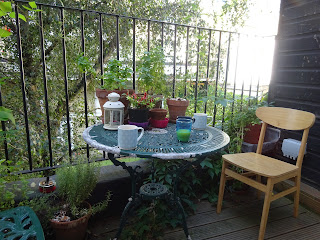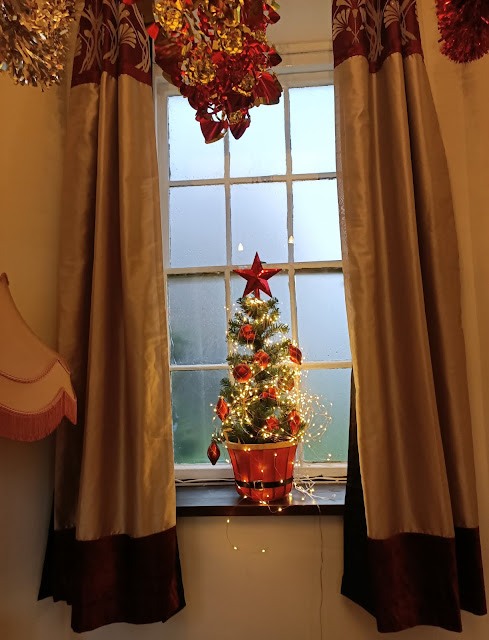A Palace, A Toilet, and a Tale of Two Thrones
 |
| Rowan's urban min-garden, Marylebone |
Home for the rest of this week is an ‘Airbnb’, a delightful duplex flat conversion above a Georgian Regency shop in London’s Westminster district (just off Marylebone Road, for all you Monopoly players). The highlight of the accommodation has to be a tiny 6ft by 8ft balcony, providing the only outside space at the property, but in central London, where any outside space is at a premium, I treasure it. Our host, Rowan has stocked it with a surprising range of herbs and spices for such a petit, urban plot. Tonight, I enlivened decidedly ordinary supermarket pizzas with fresh basil, oregano and chillies. What a difference freshy cut herbs make! The little balcony also gives me the opportunity to do a little gardening, because the sad truth is, when I’m away from my garden at home, the allotment and the gardens at Betley Court, I pine dreadfully for my plants! I stress that they will die through my neglect-by-abandonment, or even worse still, perished because my chosen plant-sitters have drowned them in a fit of over-enthusiastic watering. So, Rowan’s little paradise offers me a distraction from my anxiety, and the chance to nurture plants. I can even tend to a wormery, if I fancy. What a find!
 |
| The onion domes of Royal Pavilion, Brighton |
Brighton Pavilion’s architecture stands out. It’s Indo-Islamic influences mark it out as different to anything else built in Brighton, or even Britain at that time. Even today, it has the power to stop a passer-by in their tracks, and it is a huge draw for overseas and domestic visitors alike.
Despite never visiting India in his lifetime, George was keen to show off, through the medium of architectural endeavour, the influences that were coming back to England, as the nation’s explorers and traders travelled the globe. The Royal Pavilion manifested in bricks and mortar, the Prince Regent’s taste, influence and wealth.
 |
| Indo-Islamic influenced decoration. Had England ever seen anything like this before? |
So, what, I can hear you asking, has this to do with Betley Court? The answer is one man: John Nash. Six years before he was asked to undertake the prestigious commission of re-modelling the Royal Pavilion for the Prince Regent, Nash, the go-to architect of the Regency/Georgian period was engaged by Sir Thomas Fletcher, of Betley Court to remodel the drawing room. This entailed adding a rather handsome bow window to the south elevation, a single-storey bow to the Fletcher's best entertaining room. The addition of a bow window complemented the pair of double-height bow windows that had been added previously.
 |
| Nestled between the two double-height bays, John Nash's single storey bow window |
The bow window on the drawing room was not the only commission Nash undertook at Betley Court. However, I suspect the next commission was not something he added to the top of his architectural resume. Ladies and Gentlemen, the next adaptation to Betley Court by renowned architect, John Nash was in fact…a toilet. An indoor privy. A bog. The loo. I’d like to add a little context here. Main sewerage did not arrive in Betley until 1963, so outdoor privies were ‘dug out’ or emptied by a man, known as the ‘night soil man’ at regular intervals. Later, the local council took on the task - this is within the living memory of older villagers! In a country house like Betley Court, it was the chambermaid’s privilege to empty the chamber pots. The ‘night soil’ (a rather coy way to describe human excrement) was most often collected to be used as human manure on vegetable gardens.
By Regency times, rudimentary water closets were being invented. They were not common by any means, but they were being installed in some country homes by a wealthy, forward thinking elite. Sadly, we have no idea what Sir Thomas Fletcher’s toilet looked like, but Joseph Bramah’s hinge valve or ‘crank valve’ water closet was a popular model at the time.
 |
| Joseph Bramah's 'crank valve' water closet. Could Sir Thomas Fletcher Twemlow have installed one of these? |


Comments
Post a Comment